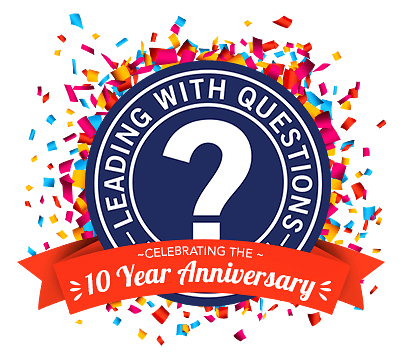Peter Winick has made it into the top 100 for Thought Leader Personal Branding at…
Five Questions that Craft a Manifesto
Source: Five Questions that Craft a Manifesto, at LeadingWithQuestions.com
Guest Post by Peter Winick
I’m a big believer in the power of manifestos. It forces the author to crystalize their thinking about their content and more importantly, gets them to have a more complete understanding of its potential impact on their respective followers, community and, in many cases, the world at large. Heck, if a thought leader can’t think big about their work, why bother creating? I’ve written one myself and have worked with several clients to help them craft theirs’.
I recently wrote about why you should write a manifesto and have been asked how to do so by many thought leaders. I don’t believe there is one right way to craft a manifesto but I strongly believe that there are several things to consider as you embark on this process.
- What’s the problem that your work is trying to solve? The world does not need another leadership model, management model or sales model. It does however need thoughtful and impactful content that solves problems for individuals, teams, and organizations. Try your best to clearly articulate what problem or problems your work solves. Speak directly to that issue and how your content addresses it.
- What is at stake? What’s the “so what?” Once you’ve identified the problem, determine what is at stake. If this issue, problem, or situation continues to proceed down the path it is on without some sort of change, what will happen? Why should I care or, if my beliefs are aligned with yours, what should I do about it? The stakes needs to be big, bold, and relevant or it will get buried amidst the noise of so many other things that folks are exposed to on a daily basis.
- What do you want people, teams or organizations to DO once they hear your message? You want a clear call to action. Do you want them to spread the message and share your manifesto with other like-minded folks? Do you want them to buy your book? To go to your site and learn more? To sign a petition of some sort? There needs to be a call to action and it should not be something that’s about you or to your benefit. That’s marketing, not thought leadership marketing. One of the objectives of a manifesto is to spark a movement of some kind. Be clear about the actions you want them to take if you want to move them from being aware of your work to being truly engaged in it.
- What changes will we see as a result of your point of view/content/model being adopted? Think in terms of benefits — observable behavior changes, societal impact, business results. How will we know when we’ve “reached the promised land” if you fail to paint a vivid picture of what it will look and feel like?
- What obstacles must we overcome? The problem you are trying to solve is valid, the stakes are high, and you know what action is needed change the status quo; if it weren’t for the existing obstacles this issue probably would have been resolved already. Identify the obstacles and speak to them. It may be a way of thinking, a set of beliefs, rules, laws, regulations, traditions, habits, etc. There are obstacles that need to be revealed so we can utilize our community to collectively focus on how to overcome them. Obstacles are everywhere, yet a powerful concept can overcome almost any obstacle if it is relevant, timely, and resonates with people at multiple levels.
Crafting your thought leadership manifesto is not an easy task. However, for many thought leaders the process yields not only an awesome manifesto, but by bringing our solutions, stakes, actions, results, and obstacles together, we discover a multidimensional platform and unearth a deeper understanding of what our work has the potential to do.
Note from Bob: Without ever having met you I know there are things that you do better than anyone else! Question: Have you written these things down so that others can learn from your experience? Or will your wisdom/insights/recipe for success die with you? Please use Peter’s great questions to help you share your God Given Wisdom with all the come after you!
Peter Winick is Founder/CEO Thought Leadership Leverage and has Deep Expertise in Helping Those With Deep Expertise – you can connect with Peter on LinkedIn or Twitter




